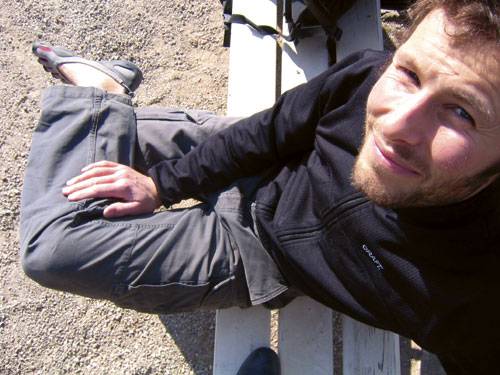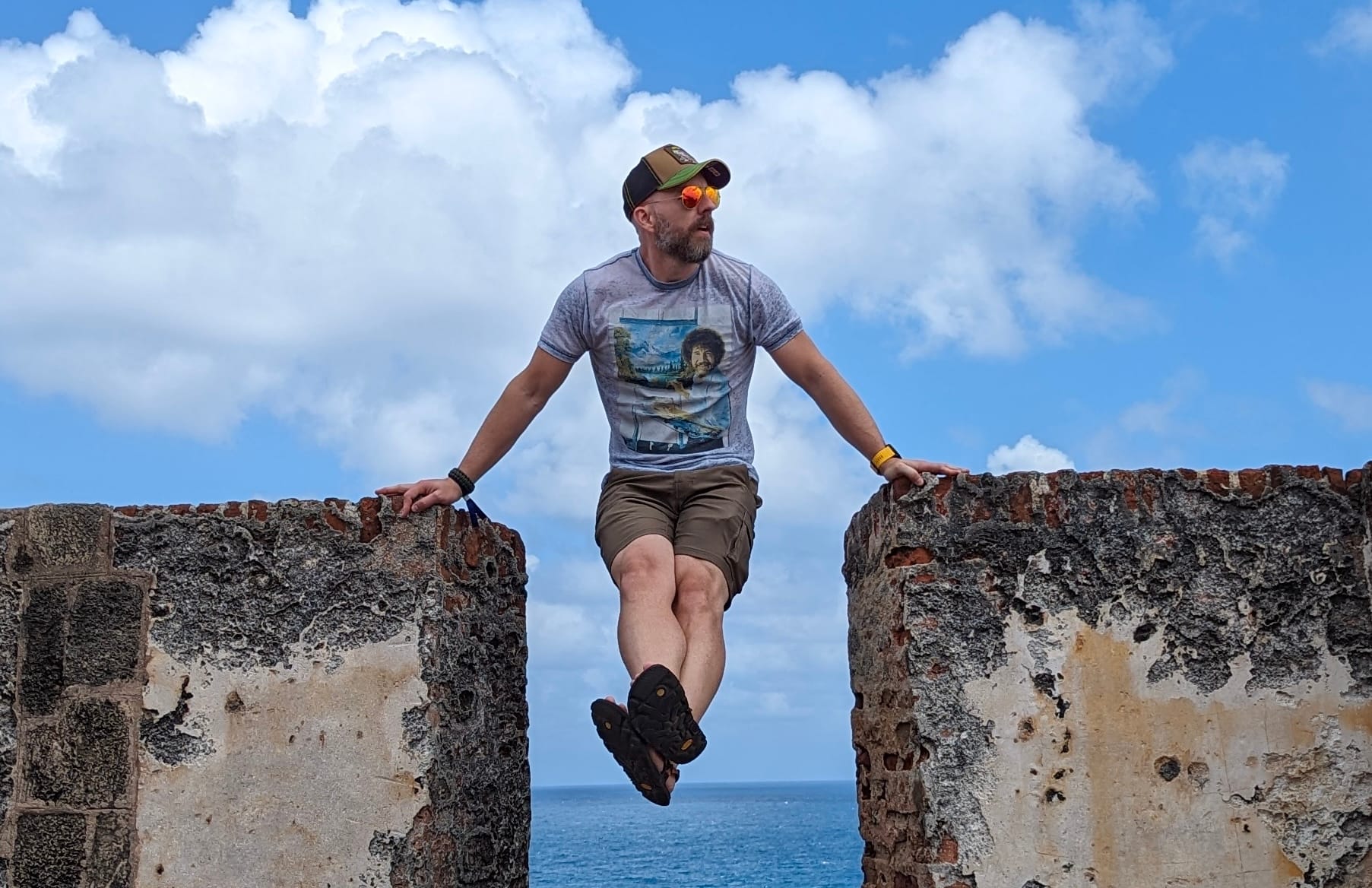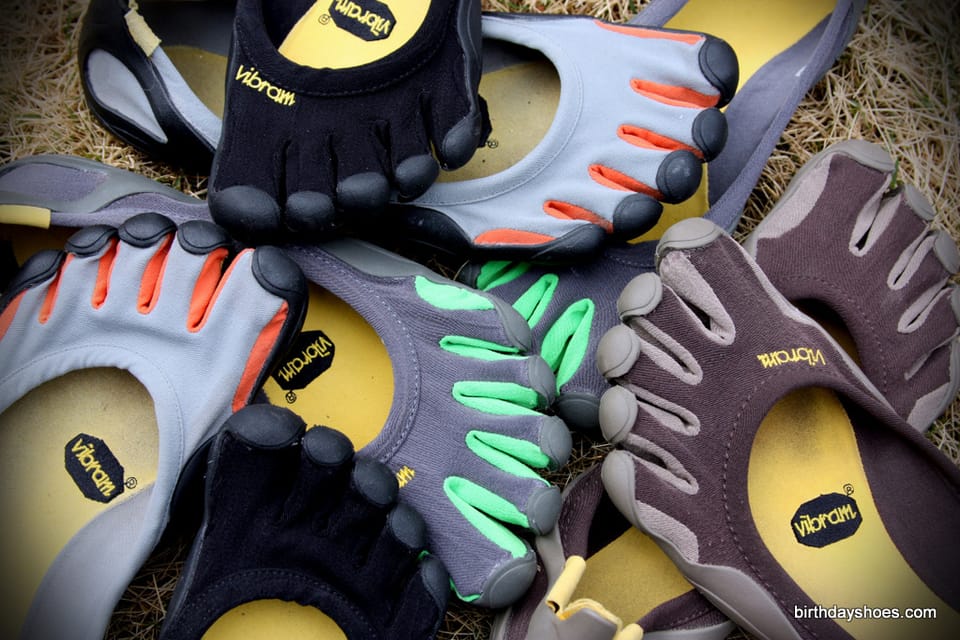The Silent Majority and the Barefoot Running Debate (Or the Runners Who Never Were)
Running isn't supposed to hurt (if you're doing it right!). A look at the barefoot running debate, and a discussion of it's important consequences for individuals outside the running community.


The Barefoot Running Debate
It's impossible to miss — the media is paying it major attention, running shoe companies are finally breaking their silence, and at least one so-called expert is resorting to fear-mongering over pebbles and a world filled with glass shards waiting to rip your feet to shreds. How we should run is the topic of the hour — enter the barefoot running debate.
The barefoot running debate is curious. It feels backwards. Most know Occam's Razor: the simplest answer tends to be the best one. What is the simplest answer when it comes to what human beings were meant to put on their feet in order to walk or run? Nothing. We are barefoot by default — OEM human. Starting from the default human condition, the onus regarding the merits of shoes should be on the shoe companies.
But of course it's not. It's the opposite.
And just to be clear, the debate isn't simply about barefoot running. It is a debate about high-tech running shoes and biomechanical efficiency. It's about running form: "Which is less likely to cause injury: to heel-strike or forefoot-strike?"
Running is a passionate subject for both sides — passionate views bolstered by personal experience. On one side, you've got the formerly-shod-runners-turned-barefoot-true-believers proclaiming that, "Barefoot is better!" The barefoot runner's enthusiasm springs from leaving behind injury-prone shod running to being born again, bare feet and all, running injury-free. Meanwhile, you've got injury-free shod runners who have logged thousands of miles in running shoes saying, "I like my shoes and have no problems running shod, so you barefoot zealots need to back off!" With such convicted views, the discussion can get a bit heated.
The barefoot running debate is unlikely to be won by either side anytime soon. It's just impossible to overturn personal convictions, "If it ain't broke, don't fix it!" There are shod runners who have their form dialed in and don't get injured; for example, just take ultra-runner Scott Jurek. Also, whatever science experiments need to take place to provide a definitive answer have yet to be conducted.

For now, the question is left to be decided on a per-runner basis. For the shod runners who are biomechanically blessed with the ability to run injury-free in thick-heeled and/or significantly cushioned running shoes, more power to them. For those runners who can only dial in their running form by running barefoot or in minimalist footwear who practice natural running with a forefoot strike — they get to run injury-free, too.
It's in this line-of-thought that the barefoot running debate was best summed up by Christopher McDougall, "[The] debate isn't about Bare Soles vs. Shoes. It's about learning to run gently. Master that, and you can wear — or not wear — anything you please."
To each his own and we all run happily ever after. Right?
If only it were that simple. The reality is that when the barefoot running debate is only considered by runners, everyone else — the silent majority of would-be runners — is ignored.
The Silent Majority or (Or the Runners Who Never Were)
The barefoot running debate is only occurring within a self-selected group of runners (as well as the occasional shoe manufacturer). This distinction isn't trivial. Think about it. To become a runner — to take to running — you have to possess or do one of the following things:
- You natively possess a running form that is conducive to running in modern running shoes. You are able to heel-strike gently in running shoes or run in some manner (pronation, supination, whatever works for you) that lets you wear your cushioned shoes and not be uncomfortable.
- You adopt a natural running technique like Pose or Chi running.
- You take to barefoot running (or minimalist footwear running) and let the ensuing feedback educate your form.
- You run despite the discomfort of running in modern running shoes. You grin and bear it, assume "no pain no gain," and slog away running despite the discomfort. Maybe if you're lucky you hone in your form in such a manner that running becomes tolerable and you continue doing it out of a sense that it's necessary for your continued health.
The above requirements represent a selection process. This process specifically selects out of the running community individuals who try to run but find it too uncomfortable or painful to pursue.
I contend that there is a large body of individuals out there who have completely given up on running. Sure, some runners who never were are individuals that gave up because they were starting from a significant deficit of unhealthiness. I believe many more have tried to run only to find the ensuing ankle, knee, and hip pain; inflamed joints; or other negative effects to running too much to make the activity worthwhile. If that was you, would you keep at it despite the pain? Running should not be approached as some kind of Puritan punishment.
I know the runners who never were exist because I once counted myself among their ranks. "I hate running — it's not for me," that's what I'd tell anyone who asked. Though I could bike for miles without problem, when it came to running, I couldn't run a mile without experiencing pain in my knees. Why bother? I rejected running.
My former outlook on running is not unique. I say "former" because now I run naturally without pain.
The a-ha moment, of course, wasn't a new understanding of how to run nor was it some resolve to give running another go. My transition back to running came with a pair of "barefoot shoes" (Vibrams) that I got to work out and run sprints* in. I never bought Vibram Five Fingers with the intention of running any distance in them. It was only a year into owning a pair that I came to understand that my high-heeled, cushioned shoes were both encouraging me to heel-strike while muting the feedback from the ground. Running in a modern shoe, I just couldn't manage to nail down a form that didn't leave me pounding the ground, and in turn, pounding my knees. In short, my running shoes left me leaving running. Only running in my VFFs, which really did nothing more than let my feet be feet, was I able to run without heel-striking, landing lightly and gently on my forefoot.
I doubt I would have ever given running another shot but for having a shoe that allowed me to — forced me to — run naturally. Don't hear this as saying you have to get VFFs to run naturally — all you need to run naturally is your bare feet. Five Fingers were just how I rediscovered running.
How many more people out there will never give running another thought because they associate running with pain — because the last time they ran it was painful? How many more might benefit from giving running another try if they'd only change their shoes, allowing (forcing) their bodies to run lightly and gently? I'd put the numbers of would-be runners in the hundreds of thousands.
It's in this sense that the barefoot running debate isn't just a matter of "to each his own." Unless the shoe industry swings heavily in the direction of minimalist footwear, many more would-be runners will just give up on running. I don't want to see that happen.
This barefoot movement is about awakening the disaffected masses who have given up on running. This is why the true believing barefoot runners are so zealous to the cause. Realizing you can run without pain is astonishingly empowering — to know that your default human state is strong and not broken — who wouldn't want to share that life-affirming freedom with everyone?
I see this as one of the underlying missions behind birthdayshoes: blowing up the mainstream paradigm that running requires protective, form-correcting, thickly soled shoes; and that running shouldn't be painful (And if it is, you're doing something wrong).
As for the runners running happily in their shoes, I say "Have fun!" This debate doesn't really concern them. It does concern the runners who never were. It is those I want to tell, "Maybe you should set aside your running shoes and give running another chance."
We knew as children that running was play — innate fun for anyone and everyone to enjoy. It should be no different for adults. If we can change this paradigm, we can usher in a new generation of runners, but the barefoot running debate is central to that change.
* Sprints never hurt my knees, but then again, why would they? Why would I actually like running sprints and hate running a mile? This contradiction never crossed my mind until I understood that sprints required I run naturally with a forefoot strike.




